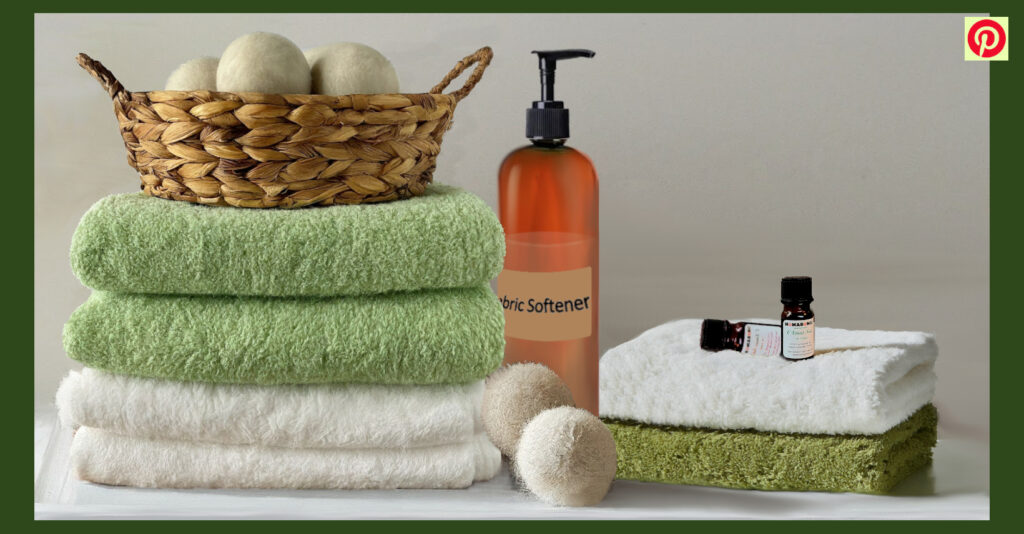
Embrace the Cuddle with Homemade Fabric Softener
Almost a decade ago I eliminated liquid fabric softener and began cutting my dryer sheets in half. I wanted to reduce my family’s exposure to synthetic fragrance, while still keeping our laundry soft and clean-smelling. Then, over 5 years ago I made the switch from dryer sheets to wool dryer balls and in-wash homemade fabric softener. And I haven’t looked back!
[This post contains affiliate links. If you make a purchase through one of these links I may earn a commission. This does not impact your price. For more information, please see our disclosure.]
In this Post:
Why Homemade?
Commercial fabric softeners are loaded with chemicals that can irritate skin and wreak havoc on the environment. Homemade fabric softeners are simple to make with just a few ingredients.
You will not believe how easy it is to make an in-wash fabric softener. In fact, if you like, you could simply add distilled white vinegar to your machine’s fabric softener dispenser. Or, you can bump it up a notch with germ-fighting essential oils! You’ll see how below.
Benefits of Homemade Fabric Softener
- Softer, Smoother Threads: Detergent build-up can lead to stiffer fibers. Natural softeners, like vinegar, help remove detergent residue so your clothes are softer.
- Film Free: Commercial fabric softeners contain conditioning agents that can leave a film on your clothes. Our homemade fabric softener keeps your laundry film free.
- Goodbye, Itch! Most commercial softeners contain harsh chemicals that can irritate sensitive skin (like mine). By going natural, you’ll be kind to your skin and avoid that annoying itch.
- Biodegradable: Natural softeners break down easily, unlike their synthetic counterparts which can linger in the environment.
- Bye-Bye Bottles: When you make your own in-wash fabric softener you won’t have to deal with recycling the commercial fabric softener bottle (and the rinsing out that goes along with it!). Instead, you’ll reuse the same bottle each time you make a new batch!
- Budget Friendly: Homemade fabric softener is surprisingly affordable. A few simple inexpensive ingredients can create gallons of natural goodness, saving you money immediately.
⭐️Fab Fabric Softener Recipe
- 16oz PET Plastic pump bottle
- 5g (1 teaspoon) Polysorbate-20
- 5g (120-125 drops) Essential Oils—see blends below
- 415g (1 3/4 cups) distilled White Vinegar
To Make: Combine Polysorbate-20 and Essential Oils in the pump bottle. Swirl for 20-30 seconds to combine and let sit for 5 minutes. Swirl again. Then add distilled White Vinegar. Cap, shake well, and label. [Also, I always recommend wearing gloves when blending.]
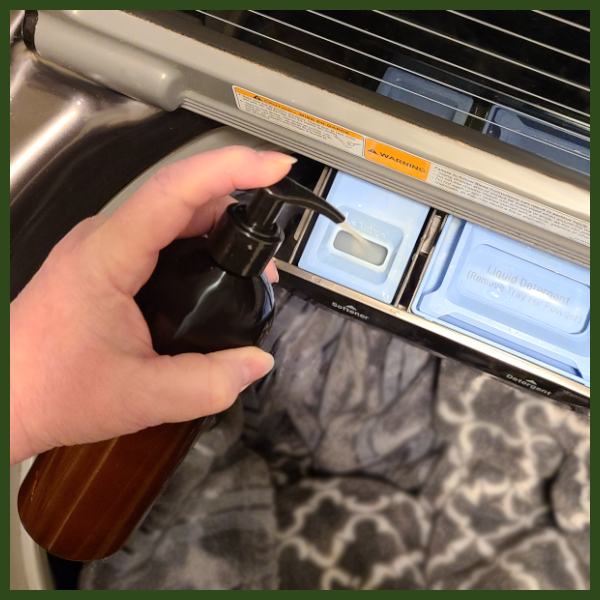
To Use: Dispense 15-20 pumps (about 3-4 Tablespoons) of liquid fabric softener to the washing machine’s softener dispenser. Run cycle as usual.
Why PET Plastic? I use PET plastic for my fabric softener because the bottle can get wet and slippery, and I’m not the only one using it! PET plastic also has good resistance to reactivity with essential oils and vinegar. I think I’ve been using the same PET bottles for going on 3 years and I just keep refilling!
However, if you wish, a glass pump bottle can certainly be used instead of PET plastic.
Why Grams? I use a scale to make all of my products. Measuring by weight allows me to consistently make a product the same way. This is the jeweler’s scale I use for projects like this.
Fabric Softener Essential Oil Blends
While vinegar can be used alone as a softener, essential oils provide germ-fighting action, too. Here are some of the blends I use regularly—my favorite is the Fabulous Fabric blend.
⭐️Fabulous Fabric Blend
- 2.5g (53-58 drops) Lavandin essential oil (Lavandula x intermedia)
- 1.25g (28-31 drops) Lemon essential oil (Citrus x limon)
- 1.25g (28-31 drops) Tea Tree essential oil (Melaleuca alternifolia)
⭐️Love Lavender
- 5g (123-126 drops) Lavender essential oil (Lavandula angustifolia)
⭐️Fresh Forest Blend
- 3g (73-75 drops) Eucalyptus globulus essential oil
- 1g (24-25 drops) Lemon essential oil (Citrus x limon)
- 1g (24-25 drops) Peppermint essential oil (Mentha x piperita)
⭐️Sporty Citrus Blend
- 2.5g (60-63 drops) Grapefruit essential oil (Citrus x paradisi)
- 1.25g (28-31 drops) Lemongrass essential oil (Cymbopogon citratus/C. flexuosus)
- 1.25g (28-31 drops) Rosemary camphor essential oil (Rosmarinus officinalis/Salvia rosmarinus ct camphor)
What’s Polysorbate-20 & Why’s it in My Fabric Softener?
Polysorbate-20 is a common, easily accessible surfactant. It’s made by exposing a sugar alcohol, called sorbital, to ethelene oxide. Most commercially used sorbital is manufactured from corn or is synthetic. Polysorbate-20 is a common synthetic ingredient in “natural” skin care products.
In this recipe, polysorbate-20 is our solubilizer, allowing the essential oils to remain suspended in the vinegar. To solubilize essential oils, a starting ratio is 1:1—our recipe has 5g Polysorbate-20 and 5g total essential oils (1:1).

The surfactant/solubilizer is an important component in this recipe. With out it, your washing machine and laundry could be damaged by exposure to undiluted essential oils. If you don’t wish to use polysorbate-20, simply omit the essential oils and use distilled white vinegar alone.
Why Vinegar?
This fabric softener really is all about the vinegar! In addition to the natural softening that vinegar provides fabrics, you can also use it as a pre-treatment!
- For grease stains, place a small towel under the fabric, then pre-treat the area with vinegar and a drop of dish soap. Scrub gently with a toothbrush to work the mixture into the stain. Let it sit for 20-30 minutes before laundering. Spot check before tossing in the dryer.
- For sweat stains, mix equal parts water and vinegar and apply to the stain. Let it sit for 30 minutes before laundering. It will also neutralize the sweaty odor! (I keep a spray bottle of 50/50 in my laundry room.)
By making simple changes, like replacing commercial fabric softener with homemade and replacing scent beads and dryer sheets with wool dryer balls and essential oils, you can keep your clothes soft and fresh without compromising your health or the health of our planet.

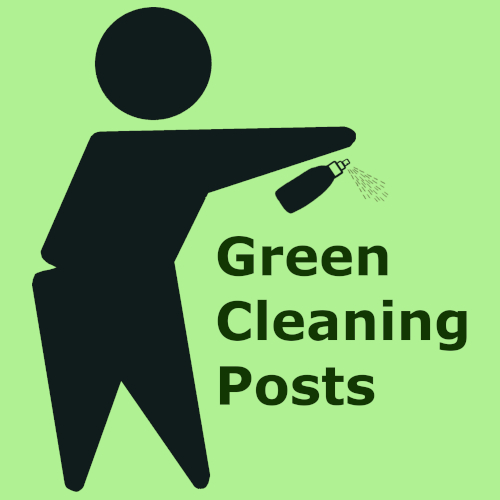
📌Green Cleaning Pins

Mom’s Laundry List
Get ready to make your own laundry fabric softener! Here’s where I get the ingredients to make mine:
- 16oz Pump Bottle:
- PET Slim & Tall (on Amazon)
- PET Wide Base (on Amazon)
- Glass Wide Base (on Amazon).
- Distilled White Vinegar – local grocer
- Polysorbate-20:
- Velona natural oils, USP (on Amazon).
Fabulous Fabric Blend
- Lavandin essential oil (Lavandula x intermedia):
- Lemon essential oil (Citrus x limon):
- Aromatics International, organic
- Edens Garden, sustainable (on Amazon)
- Plant Therapy, organic (Direct and Amazon).
- Tea Tree essential oil (Melaleuca alternifolia):
- Aromatics International, organic
- Plant Therapy, organic (Direct and Amazon)
- TIP: Tea Tree Hydrosol is excellent for skin care!
Love Lavender
- Lavender essential oil (Lavandula angustifolia):
- Aromatics International, organic artisan (grown and distilled in Montana)
- Plant Therapy, organic (Direct and Amazon)
- TIP: Plant Therapy’s Lavender Hydrosol (Direct and Amazon) is lovely for skin care and general aromatherapy.
Fresh Forest Blend
- Eucalyptus globulus essential oil:
- Aromatics International, organic
- Plant Therapy, organic (Direct and Amazon).
- Lemon essential oil (Citrus x limon):
- Aromatics International, organic
- Edens Garden, sustainable (on Amazon)
- Plant Therapy, organic (Direct and Amazon).
- Peppermint essential oil (Mentha x piperita):
- Aromatics International, organic
- Plant Therapy, organic (Direct and Amazon).
- Aromatics International‘s Peppermint hydrosol is cooling to skin and can be added to beverages!
Sporty Citrus Blend
- Pink/Rose Grapefruit essential oil (Citrus x paradisi):
- Aromatics International, organic, Rose
- Plant Therapy, organic, Pink (Direct and Amazon).
- Lemongrass essential oil (Cymbopogon citratus / C. flexuosus):
- Aromatics International, sustainably wildcrafted
- Plant Therapy, organic (Direct and Amazon)
- Also Aromatics International’s skin-gentle, organic Lemongrass ct rhodinol.
- Rosemary essential oil (Rosmarinus officinalis / Salvia rosmarinus):
- Aromatics International, organic, Rosemary camphor and Rosemary verbenone
- Edens Garden, sustainable, “Spanish” Rosemary camphor (on Amazon)
- Plant Therapy, organic, Rosemary 1,8-cineole (Direct and Amazon).
This information has not been evaluated by the Food and Drug Administration and is not intended to diagnose, treat, cure, or prevent any disease. It is for educational purposes only.
All recipes provided are for personal use and are not designed for re-sale or large-scale manufacturing.
Please consult your doctor, naturopath, herbal practitioner, or other qualified health professional for medical advice and before starting any herbal regimen, particularly if you are pregnant or nursing, have any existing medical conditions, or are taking any medications.

Chris P | Author, Certified Aromatherapist, Natural Skin Care Formulator
Chris (“Mom”) enjoys formulating bespoke aromatherapy, skin care, and herbal products to support her family, pets, friends, and clients. She also loves experimenting with recipes in the kitchen. An avid reader, writer, and lifetime learner, Chris enthusiastically explores research rabbit holes and then writes about her discoveries.💚 (Learn more >>)


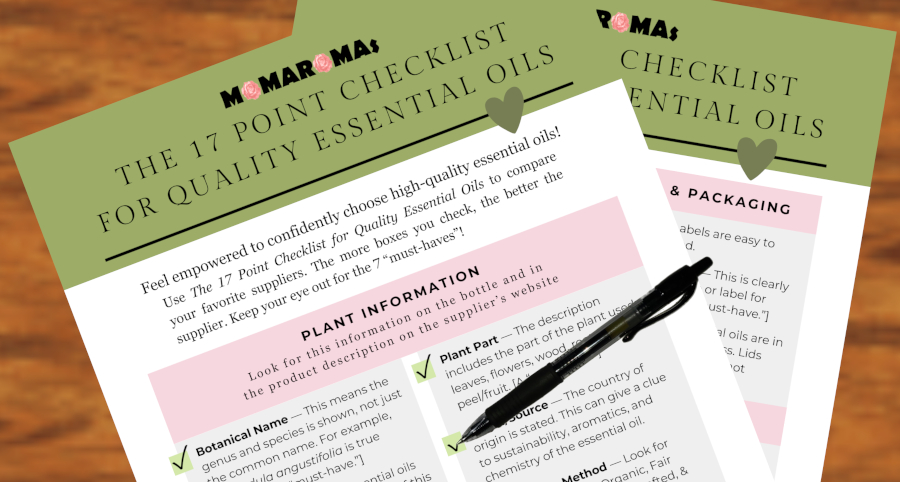
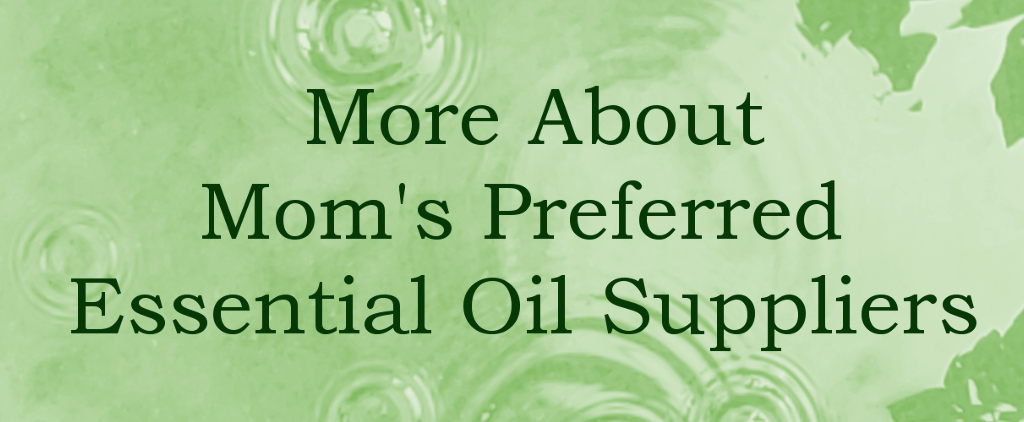

Although I have been using vinegar with or without essential oil as a fabric softener for years, I had never thought of using Polysorbate 20 with the EOs. Thanks for the tip Chris. I immediately made the new version with one of your blends 🙂
The idea is that by including the Polysorbate-20 our precious essential oils are incorporated into the vinegar rinse rather than just remaining tiny drops of oil within the vinegar. I’m glad you’re giving it a try!💚